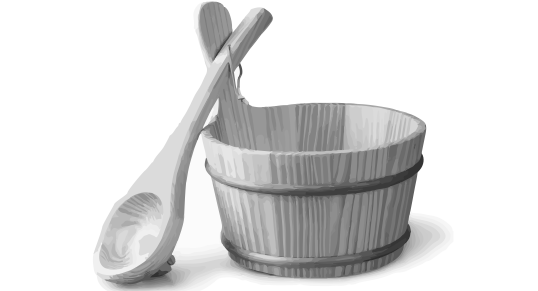Sisu. The Finnish word for what Americans refer to as “having guts” is a term often applied to those who crave the beneficial, yet sweltering heat of the traditionally Finnish experience of sweating it out in the sauna.
The art of sauna bathing originated in Finland and has existed for well over 2,000 years according to Susan Nerberg’s article, “Sweat Like a Finn.” The original saunas came in the form of alcoves dug into hills, covered, and then heated by steam from throwing water onto hot rocks. Another common practice, called avantouinti involves jumping into the freezing ocean or snow between sauna intervals. This helps to stimulate the body and gives the sauna-user a rush of adrenaline. Today, saunas in Finland are so cherished that there are two saunas for every five people in the country.
Because saunas became so popular in Finland, they quickly spread to other Nordic countries before making their way to the United States via Scandinavian immigrants. Being that Gustavus is a school that is firmly rooted in celebrating and practicing its Swedish heritage, we are fortunate to have a sauna in order to practice this deeply Scandinavian tradition.
“When I studied abroad in Sweden, it was common for my family to hit the sauna after a long day. It was a great way for me to meet new people in the community and experience authentic Scandinavian culture,” said Annalise Dobbelstein.
In “The Benefits of Breaking a Sweat,” Darren Buford discusses the many health benefits that come with sauna bathing. Acne, arthritis, sore muscles and psoriasis are just a few of the many ailments that can be treated through use of the sauna. Because thirty percent of the body’s toxins (such as lead, mercury, and nickel) are excreted through the skin, sweating is a crucial bodily function. In a time when a sedentary lifestyle is increasingly common and people are not breaking a sweat nearly as often as they should be, using the sauna can be a key component to achieving physical well being.
According to Caroline Thompson’s article “Facts About Saunas”, saunas help in alleviating problems associated with the respiratory tract such as bronchitis and asthma, as well as treating the common cold. This works by artificially heating up the body’s internal temperature, which makes it easier for the body to fight cold symptoms. Additionally, it helps in building up cardiovascular health. In fact, spending twenty minutes in the sauna is metabolically equivalent to spending forty-five minutes biking or swimming, which provides for a great way to get a short and healthy workout for students.
“Taking a sauna is a great way to relax. Because you are sweating, it helps facilitate the turnover of skin cells. It also helps to relax muscles that have been strained,” said Sauna Society Co-President, Lizzy Brauer.
In addition to having a free sauna that is open for use by all Gustavus students, two Gusties, Lizzy Brauer and Zachary Harrison Blinkensop, are working on reviving the Sauna Society here at Gustavus. This club is made up of a casual group of students who enjoy talking, laughing, and sweating together and are open to any newcomers who also want to experience the sauna.
“I am not sure about the original sauna society. According to a Weekly article from 2008, it was started in 1996 by Lars Hammer. It is being restarted to encourage Gusties to relax, enjoy the health benefits, and participate in something cultural all at the same time,” said Brauer.
“As a regular user of the sauna, I am quite pleased that the sauna is free for students to use. I’m really busy during the week and often don’t have a lot of time to relax and unwind, but the sauna is open until 9:30 p.m. most days. I would characterize going to the sauna as going to a free spa,” said Blinkensop.
In addition to being physically beneficial, the sauna provides students with a wonderful place to relieve stress and unwind after a long day of classes and studying. It’s a great way to hang out with friends, or escape from reality for a while in order to rejuvenate mentally.
“There is also a sort of myth that the sauna is some strange or weird place, but I can assure you that it is not. It is just a wooden room full of hot steam and benches. It may not seem like a lot, but it can really turn a bad day into a good one or a sick week into a healthy one,” said Blinkensop.

Good to see it starting up again for a third time. The first incarnation was actually in fall of 1991, not 1996.
We just had our twenty plus year Sweat n Snow tour in northen Wisconsin. Specifically, at Palmquist Farm. What a terrific time. Sauna truly brings people together – often for life – like no other activity or tradition that I know about!
Chad Nordstrom, class of 1995
Adult acne is caused by sebum, an oily substance produced by the skin’s sebaceous glands. Sebum clogs pores, which attract bacteria and become inflamed. For some adults, breakouts are a result of hypersensitivity or overproduction of androgens (male hormones). But an imbalance in both male and female hormones (estrogen) can also cause breakouts. For women, this can happen during pregnancy, perimenopause, and menopause. Some medications, such as corticosteroids, and cosmetics can also contribute to the development of acne.